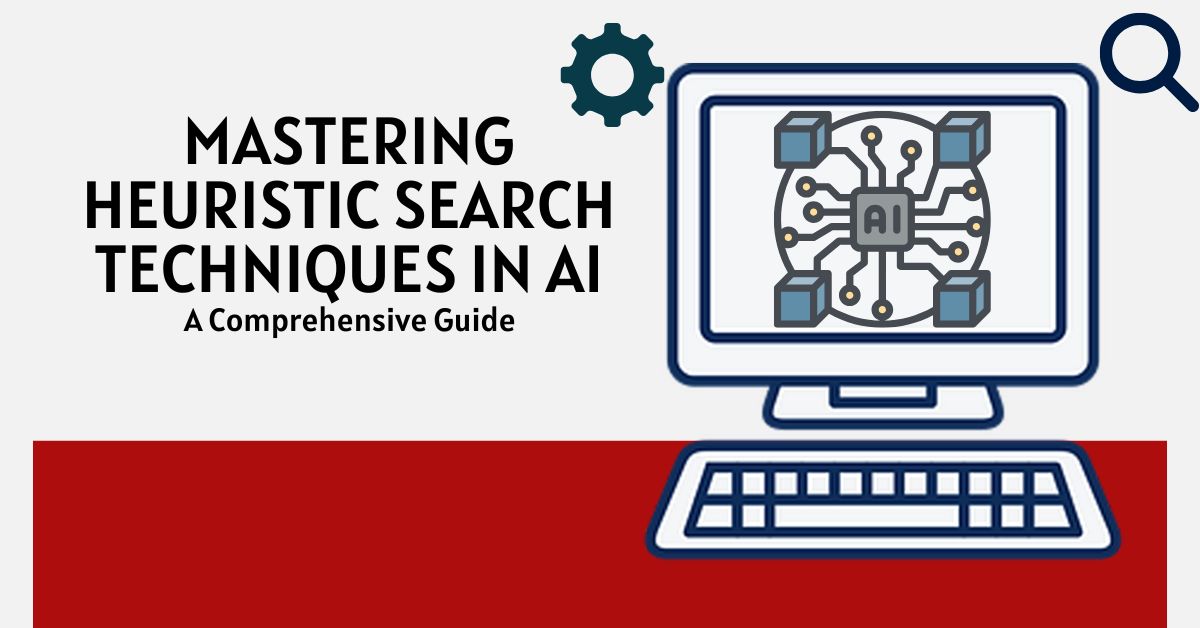Heuristic Search Techniques in Artificial Intelligence
In the realm of artificial intelligence (AI), one of the most fascinating areas of study is heuristic search techniques. These methods help machines solve problems efficiently, often navigating complex search spaces to find solutions faster than traditional algorithms. As technology advances and AI becomes increasingly integral to our daily lives, understanding these heuristic search techniques in artificial intelligence becomes ever more important. This discussion is crucial not only for AI developers but for anyone interested in the future of technology. In this blog post, we’ll delve deep into the realm of heuristic search, exploring what these techniques are, their types, applications, and much more.
What are Heuristic Search Techniques?
Heuristic search techniques are strategic methods used in artificial intelligence to solve complex problems more efficiently. These techniques rely on heuristics, which are educated guesses or rules of thumb that help guide the search process toward a solution. When traditional methods falter in enormous or intricate search spaces, heuristic search techniques offer a pathway to probable solutions without exhaustively exploring every option.
In essence, heuristics serve to reduce the number of possibilities considered, focusing the search on the most promising avenues. This is particularly beneficial in AI, where processing time and efficiency are paramount. For example, in chess algorithms, heuristics might be used to evaluate board positions quickly, determining the best moves without reviewing each possible sequence of future plays. This approach enables the AI to function effectively within reasonable time constraints.
The primary advantage of heuristic search techniques in artificial intelligence is their ability to handle complex, real-world scenarios that would otherwise be computationally prohibitive to solve using brute force methods. The strategic application of these techniques can save time, reduce computational costs, and improve the overall performance of AI systems.
Types of Heuristic Search Techniques
Best First Search
Among the various heuristic search techniques in artificial intelligence, the best first search stands out for its efficiency and straightforward implementation. Best first search processes nodes or points by focusing on the most promising option first, as determined by a given heuristic. Essentially, it integrates the advantages of both depth-first and breadth-first search, evaluating nodes with an eye toward reaching the goal efficiently.
This technique is widely used in scenarios where the solution lies in a relatively small subset of the entire search space. For example, in a maze-solving application, best first search might prioritize pathways that appear to lead closer to the exit, thus streamlining the search process. Its adaptability makes it a cornerstone among heuristic search techniques in various applications, from pathfinding to automated reasoning.
A* Search Algorithm
Another critical pillar of heuristic search techniques in artificial intelligence is the A* search algorithm. Known for its optimality and completeness, A* combines features of depth-first and breadth-first searches, utilizing heuristics to evaluate both the estimated cost to reach the goal and the cost from the start to a given node.
function A*(start, goal)
openList := {start}
closedList := {}
while openList is not empty
current := node in openList with the lowest fCost
if current is goal
return path from start to goal
remove current from openList
add current to closedList
for each neighbor of current
if neighbor is not traversable or neighbor in closedList
continue to next neighbor
if new path to neighbor is shorter OR neighbor not in openList
set fCost of neighbor
if neighbor not in openList
add neighbor to openList
A*’s heuristic evaluation ensures that each path considered is directly connected to the goal, providing an effective balance of thoroughness and speed. This makes it particularly popular in pathfinding and graph traversal issues, where optimal solutions are necessary. Its robust design continues to make it an industry standard for AI-driven navigation applications.
Greedy Best First Search
The greedy best first search technique offers a different angle within heuristic search techniques by prioritizing nodes with the lowest estimated cost to the goal (heuristics), without considering the full cost incurred to reach each node. Unlike A*, it is less focused on the comprehensive path cost, aiming instead to quickly close in on the goal.
This approach is advantageous in applications where speed is critical and an approximate solution is acceptable, such as in certain gaming or real-time systems. For example, navigating a simple puzzle to find a similar-looking piece might employ greedy best first search, quickly proposing feasible options based on perceived best fits.
Applications of Heuristic Search
Heuristic search techniques have found numerous applications in the field of artificial intelligence, playing crucial roles in various real-world scenarios. One prominent area is robotics, where heuristic algorithms help navigate environments dynamically and efficiently, such as guiding robots in warehouse management. By using heuristics, robots can optimize their paths, minimize time taken for tasks, and effectively handle obstacles.
In game playing, heuristic search techniques are indispensable, especially in strategic games like chess where the sheer number of possible moves makes traditional searches impractical. Heuristic algorithms evaluate potential moves, select the best options based on heuristic evaluation, and execute them, making game-playing AI not only feasible but also competitive.
Another vital application is in natural language processing, where heuristic search assists in tasks such as parsing, semantic analysis, and syntactic evaluation. In these scenarios, algorithms use heuristic rules to process human language efficiently, enabling faster response times in applications like chatbots and voice assistants.
Advantages and Disadvantages
The use of heuristic search techniques in artificial intelligence provides numerous advantages. Primarily, these methods improve efficiency in handling large, complex search spaces, reducing computational demands and enabling faster problem-solving. They are also adaptable to various scenarios, allowing for tailored heuristics suited to specific problems. This flexibility is instrumental in solving real-world issues efficiently.
However, heuristic search techniques also come with disadvantages. The reliance on heuristics can sometimes lead to solutions that are not optimal, as the algorithms may miss better solutions in favor of expedience. Furthermore, the design of effective heuristics often requires in-depth domain knowledge, which can limit the technique’s applicability if such expertise is not available. Balancing these techniques’ strengths and weaknesses remains crucial for developers, ensuring their appropriate application in AI systems.
Future Trends in Heuristic Search Techniques
As technology evolves, so too do the methodologies surrounding heuristic search techniques in artificial intelligence. Future trends point towards increasingly sophisticated heuristics, potentially enhanced by the power of machine learning. By integrating machine learning algorithms, heuristic rules could adaptively evolve, improving over time based on accumulated data and experience.
Additionally, the growth of quantum computing may further revolutionize heuristic search, offering a computationally superior platform that could address some of the existing limitations. With the potential for faster and more complex calculations, quantum-enhanced heuristic searches might explore vast solution spaces more effectively than ever before, opening up unprecedented possibilities for AI.
Conclusion
In conclusion, heuristic search techniques in artificial intelligence are an essential component of modern AI systems, providing the necessary tools to efficiently navigate complex problems and environments. From best first search to the A* algorithm, these techniques have proven invaluable across various applications. While they do have their share of challenges, the advantages they offer, coupled with emerging technological trends, ensure their continued relevance and evolution in the AI landscape.
As these methodologies continue to mature, they promise to further enhance AI’s effectiveness and adaptability, becoming even more integral to the advancement of technology. Your experiences and thoughts on the use of heuristic searches in AI could provide valuable insights, so feel free to share them in the comments below!
For more on this topic, read our related articles on modern AI search strategies, or consider signing up for our newsletter to receive updates directly to your inbox.







